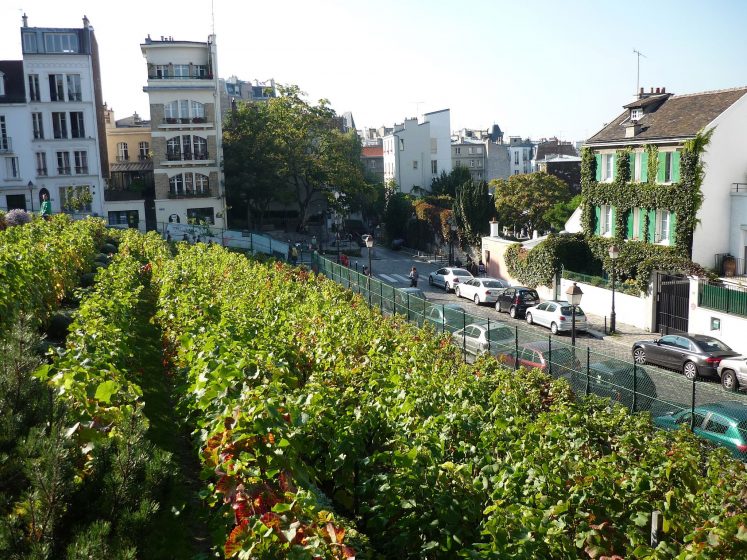Our City Blooming PDFs
Our City Blooming PDFs
Blog Article
Getting My City Blooming To Work
Table of ContentsEverything about City BloomingThe smart Trick of City Blooming That Nobody is Talking AboutCity Blooming Can Be Fun For EveryoneAll About City BloomingCity Blooming Can Be Fun For Anyone
Fascinated in expanding food offer for sale in the City of Chicago? Considering beginning a community yard? Changes to the Chicago Zoning Regulation permit farming usages like area gardens and city ranches in lots of components of the city. Below is a checklist of often asked questions regarding the guidelines and regulations that cultivators must think about when preparing an urban agriculture job.
The zoning change does not change any various other codes handling composting, building authorizations, purchasing or leasing City owned residential or commercial property, service licenses or ecological contamination. There are existing codes that regulate these concerns and they remain completely effect and might apply to your project. Area gardens are commonly had or taken care of by public entities, public organizations or community-based organizations and preserved by volunteers.
Urban farms expand food that is meant to be marketed, either on a nonprofit or for-profit basis. Because of their business function, metropolitan ranches need a service license. Yes. A community garden is enabled to offer excess create that was expanded on website if the sales are accessory or secondary to the yard's main function explained above.
The 10-Second Trick For City Blooming
The quantity of compost material can not exceed 25 cubic yards at any provided time according to the requirements in 7-28-715 of the City's Municipal Code. Since the soil at many brand-new garden websites requires changing, garden compost, dirt, wood chips, or other materials can be gotten to build or enhance the expanding room.

If a building permit is needed after that the hoophouse will be thought about an accessory building. You can figure out even more concerning the building authorization needs by contacting the Department of Structures. The 25,000-square-foot size restriction is meant to avoid a single community yard from controling a given block or interfering with the block's existing domestic or commercial personality.
The limitation does not use to gardens located in Public Open Room (POS) areas. Can there be even more than one area yard that is 25,000 square feet on a solitary block? Yes. The size limit puts on individual yards, not to specific blocks. No. Fencing is not required, however, yards that have large parking lot may be needed to install secure fencing or other landscaping attributes.
The Greatest Guide To City Blooming
B1 & B2 areas require that all commercial usage activities be carried out inside your home. Is fencing required for urban farms? Fences may be called for, along with landscape design and screening, for particular car parking index areas and outdoor job or storage space locations depending on area and the particular activity taking area.
Urban farms need structure authorizations and zoning approvals prior to building (sustainable gardening). Various other kinds of city review might be needed depending on particular frameworks, tasks, dimension, landscaping, licensing, public health and stormwater monitoring issues.
Yes. The kind of certificate is established by what is taking place at the website. The Department of Organization Matters and Consumer Security can aid determine the specific kind of service permit that's called for. Yes. Off street auto parking is needed for a lot of industrial projects in Chicago. The called for variety of car park areas is based upon the number of workers working with website and not the square footage of the growing area.
The City Blooming PDFs

A metropolitan ranch can market compost product created on site, however, the operation should comply with the policies in 7-28-715 of the Chicago Municipal Code. Aquaponic systems are allowed indoors on urban ranches in lots of zoning areas.
Up to five hives or nests of honey may be maintained as an accessory use. Beekeepers need to sign up with the Illinois Department of Agriculture. For additional information regarding the proposed zoning change you may call the Department of Real Estate and Economic Advancement, Bureau of Planning and Zoning at 312.744.8563.
Farming in cities and urban areas An urban farm in Chicago. Urban agriculture refers to numerous practices of cultivating. https://www.tumblr.com/cityblooming1/754396373643853824/welcome-to-our-website-city-blooming-is-all-about?source=share, processing, and dispersing food in metropolitan areas. The term also uses to the area activities of pet husbandry, tank farming, beekeeping, and horticulture in a city context. Urban agriculture is distinguished from peri-urban agriculture, which occurs in backwoods beside suburbs.
A Biased View of City Blooming
, that seek to develop social networks started on a shared ethos of nature and neighborhood holism. These networks can develop by method of official institutional assistance, coming to be integrated into regional town preparation as a "transition community" movement for sustainable urban growth.
The much more direct access to fresh veggie, fruit, and meat products that might be realised via metropolitan farming can enhance food safety and security and food safety while decreasing food miles, causing lower greenhouse gas exhausts, therefore adding to environment adjustment reduction. Several of the initial proof of city farming originates from Mesopotamia.
Report this page